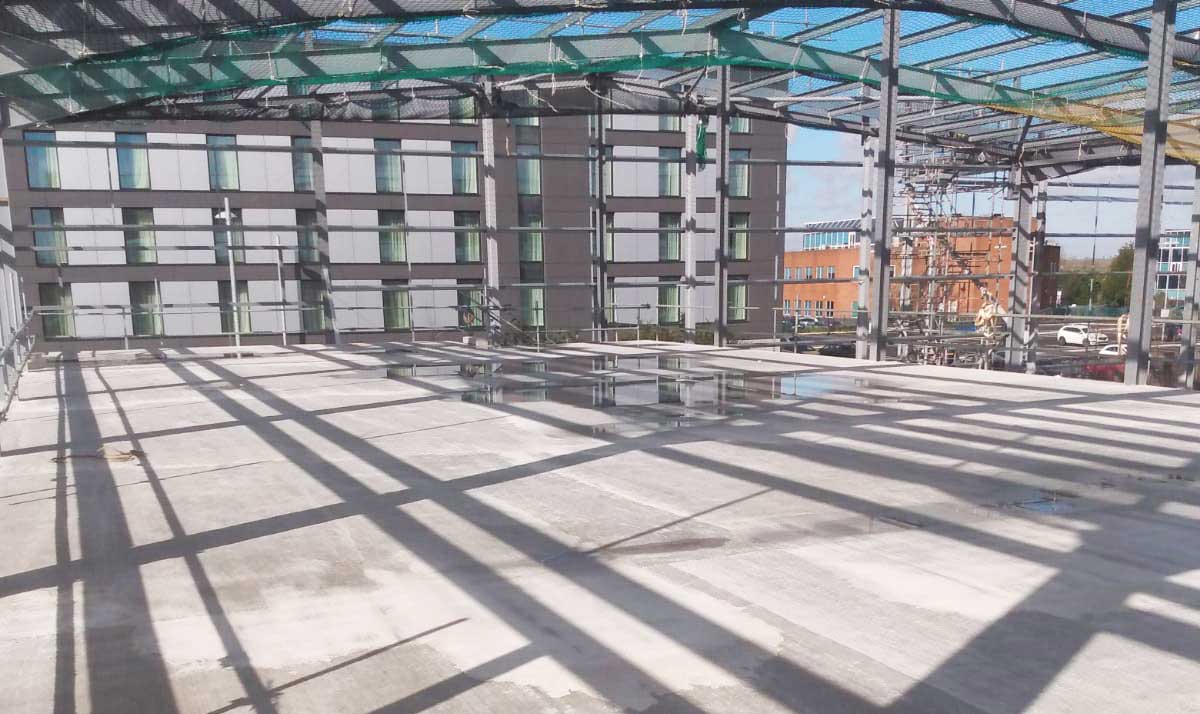Why Composites are Changing Building And Construction Products
Why Composites are Changing Building And Construction Products
Blog Article
Opening the Environmental Advantages of Recycled Compounds in Construction and Layout
In the realm of building and layout, the use of recycled compounds holds significant assurance for boosting sustainability methods and reducing environmental influence (composites). By incorporating these ingenious products, there is a potential to resolve crucial issues such as waste reduction, energy preservation, and a decrease in carbon footprint. The shift towards a much more lasting future in these sectors depends upon unlocking the complete capacity of recycled compounds. This discussion will certainly explore the complex advantages and challenges connected with incorporating recycled composites right into building and construction and design, offering a look into the transformative opportunities that exist in advance.

Ecological Influence Reduction
The decrease of environmental effect via the use of recycled compounds in construction and style plays a critical role in sustainable practices. By incorporating recycled compounds into building products, the building and construction sector can substantially lower its carbon footprint and add to a much more green future. These sustainable materials, made from repurposed plastics, wood fibers, or other recycled components, offer a feasible choice to conventional building and construction products without jeopardizing on quality or durability.
Recycled compounds assist divert waste from land fills and lower the requirement for drawing out basic materials, therefore conserving natural deposits. Additionally, the production process of these compounds frequently consumes much less energy and discharges less greenhouse gases compared to producing virgin materials (composites). This shift towards using recycled compounds not just minimizes ecological injury however also advertises a circular economy by urging the reuse of materials that would or else be discarded
Waste Minimization
With a concentrate on lessening waste in construction and layout, the integration of recycled composites supplies a sustainable option to lower environmental effect. Waste reduction is an essential aspect of sustainable techniques, and making use of recycled compounds offers an opportunity to accomplish this goal successfully. By making use of products that have currently offered their preliminary function, such as recycled plastics or redeemed timber fibers, the building and design industries can substantially lower the amount of waste generated and sent out to land fills.
Recycled composites have the potential to divert considerable quantities of waste from standard disposal techniques, adding to an extra round economy where resources are used effectively. Furthermore, the manufacturing process of recycled composites typically eats much less power and generates less discharges compared to virgin materials, even more minimizing the ecological impact of building and construction and layout tasks.
Implementing waste reduction approaches via the find out unification of recycled composites not just aids in saving natural deposits but also advertises an extra lasting method to structure and developing for a greener future.
Energy Conservation
Integrating recycled compounds not just minimizes waste in building and design however additionally plays a vital role in enhancing energy conservation practices within the market. The usage of recycled compounds in building can dramatically add to power preservation through various means. By advertising the use of recycled composites in construction and design, the sector can make significant strides towards accomplishing energy efficiency and lowering its carbon footprint, eventually adding to a much more sustainable built setting.
Carbon Impact Decrease
Enhancing sustainability practices through the application of recycled compounds in building and construction and style dramatically minimizes the carbon footprint of the industry. By incorporating recycled materials right into the manufacturing of composites, the need for virgin sources reduces, leading to reduced power consumption and blog here greenhouse gas emissions related to typical production processes. This decrease in carbon footprint is crucial in combating environment modification and promoting an extra eco-friendly approach to building and construction and layout.
The carbon footprint reduction attained via the adoption of recycled composites straightens with the global press in the direction of sustainable methods and the decrease of commercial discharges. Inevitably, by prioritizing the combination of recycled compounds, the sector can make significant strides in lowering its carbon impact and contributing to a much more sustainable future.
Sustainable Future
The integration of recycled compounds in building and construction and style not only addresses instant environmental worries however likewise lays a solid structure for a sustainable future in the sector. By integrating recycled compounds into structure materials and items, the building and layout industries can considerably reduce their reliance on virgin sources, causing a much more circular economic climate. This shift in the direction of sustainability is important for mitigating the ecological influence of typical building practices, which commonly result in high degrees of waste generation and source depletion.

Verdict
Finally, recycled compounds supply substantial environmental benefits in construction and design by minimizing ecological impact, reducing waste, conserving energy, decreasing carbon impact, and advertising a lasting future. Accepting using recycled composites can contribute to a more environmentally-friendly approach to structure and layout, eventually bring about a much more sustainable and greener future for all.
The reduction of ecological influence with the use of recycled composites in construction and layout plays a vital function in sustainable practices.With a focus on decreasing waste in building and construction and layout, the integration of recycled composites supplies a lasting service to reduce ecological influence. By advertising the use of recycled composites in construction and design, the sector can make considerable strides towards attaining energy efficiency and decreasing its carbon impact, eventually contributing to a more sustainable constructed environment.

Report this page